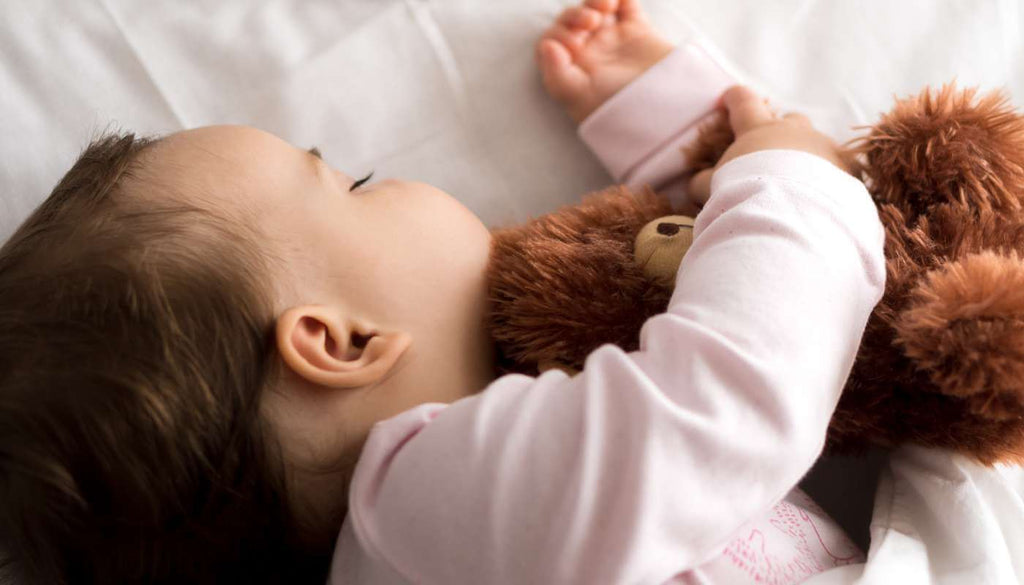
How To Clean Kids Toys (The Non Toxic Way)
It’s important to clean kids toys regularly. Toys are constantly in your children’s hands and often end up in their mouths as well. And because children can quickly spread and pick up germs this way, regular toy cleaning should be a part of your routine. This is one way you can reduce your children’s chances of getting sick.
You don't want to damage the toys. So before you begin cleaning and sanitising your children’s toys, check manuals and leaflets for the manufacturer’s cleaning instructions. As whatever cleaning product you use on the toys will inevitably make it into your child’s mouth, it's best to use safe natural cleaners with no toxic ingredients.

Soft toys
While keeping hard toys clean is relatively easy, sanitising soft or plush toys is a bit more complicated. Plush toys absorb water and need to be thoroughly dried or they could become breeding grounds for mould.
The first thing you need to do is to check soft toys for parts that will be ruined by water or will not survive a spin in the washer. Check for delicate items like plastic hair or beads that can’t be removed. Look for glued on items such as ribbons and faux jewelry. Some soft toys have music boxes inside; see if these are removable. If a toy has fragile parts or is old, it may be best to hand wash it instead.
Clean toys that are washing machine safe by first pretreating visible stains with a safe stain remover. If dust mites in soft toys are an issue, stick the toys in the freezer overnight. Next, load them into the washer and run the machine on the gentlest cycle. After pulling the toys out of the machine, run a comb through doll hairs and stuffed animal fur to refluff them.
Don't put soft toys in the dryer as they might shrink. Instead, use a towel to pat out excess water and hang them out in the sun to dry.
To clean toys that are too delicate for the washing machine, make a cleaning solution with water and baby safe laundry detergent. Use a clean cloth to gently rub the solution over the entire surface of the toys. Next, soak the cloth in warm water and gently wipe off the solution. Wipe down the toys with a towel to get excess water off and let them air dry completely.
Wooden toys
Wood is said to have naturally occurring antibacterial properties, but it’s still a good idea to regularly clean wooden toys.
To clean toys made out of wood, you first have to wipe them down with a damp cloth. This gets rid of surface dirt and grease. To sanitise wooden toys, you can use a 100% natural spray cleaner or a laundry detergent and water solution. Use a clean cloth to rub the cleaner or solution onto the toy’s surface, wipe off the excess with a damp cloth, and let the toy air dry. This also works for metal toys and plastic toys with batteries.
You can also clean wooden toys with vinegar, which can kill mould and some bacteria. Mix equal amounts of water and distilled white vinegar in a spray bottle. Spray a small amount on a clean rag and wipe down the wooden toys. The vinegar smell should disappear within minutes.
Plastic toys
With plastic toys that aren’t battery operated, you have two options. You can either chuck them into the dishwasher or wash them by hand. With the dishwasher, use an all natural, biodegradable dishwash powder made with plant based ingredients. If you're handwashing the toys, use hot water and a toxin free dishwashing liquid or laundry liquid. For stubborn stains or caked on grease, you can try using a mix of vinegar and baking soda. Then, rinse the toys well and let them air dry on a dish rack.
To clean toys with batteries, use a solution of water and a natural cleaning product to wipe down the surface. Wipe off the excess moisture with a clean rag and allow the toys to air dry.
Latex toys
Recently, Sophie the Giraffe became the subject of controversy after a concerned mum posted a photo of mould growing all over the inside of her child's Sophie teething toy. The company that makes the super popular chew toy has since released a statement about the issue. Because Sophie is made of 100% natural rubber, it said, it's important to follow the cleaning instructions.
Latex toys like Sophie the Giraffe should be wiped down with a damp cloth. Because Sophie has a hole (as do many similar toys), it must never be immersed in water or rinsed under the tap. When cleaning latex toys with holes, take care not to get any water inside. Also, you can sterilise latex toys with an alcohol free spray sanitiser that doesn't have to be rinsed off.
Latex toys should not go in a steam steriliser or a microwave. Don’t clean toys made out of latex by boiling them or using chemical cleaners. Because latex can be heat sensitive, rubbery toys that are regularly exposed to high temperatures and strong chemicals may disintegrate and become a choking hazard. Use only natural cleaning products on latex toys to keep the material from deteriorating.

